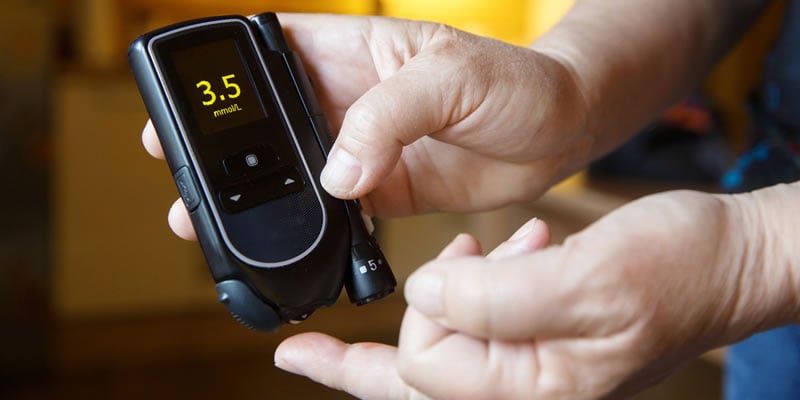Tattoos are a popular form of body art that involves using needles to inject ink under the skin.
Having diabetes doesn’t mean you can’t have a tattoo, but before deciding to have one done you must be well and ensure that your diabetes is well controlled.
High blood sugar levels, for example, can complicate the healing process and increase the risk of infection. Blood pressure should also be kept within the recommended target range.
Bear in mind that your blood sugar level may rise whilst your tattoo is being applied.
As this process can be quite long, painful and somewhat stressful, particularly if you’ve chosen a large and complex design – another reason why they must be stable before the procedure starts.
However, they should return to normal the next day.
Other things to consider before getting a tattoo include:
Placement
Permanent body art can be applied to nearly every part of the body.
For people with diabetes, there are certain areas that should be avoided including those with poor circulation, such as:
- Buttocks
- Shins
- Ankles
- Feet
- Common insulin injection sites such as arms, abdomen and thighs.
Tattoos in these places usually take longer to heal, which can lead to complications (e.g. infection).
Design
Tattoo designs are usually based on things that are meaningful or significant to the individual.
For a person with diabetes, this could be something that includes clear medical symbols and/or text that indicates their condition.
These so-called ‘diabetes tattoos’ have become quite common in recent years, with many diabetics using them to replace medical jewellery as a permanent form of diabetes identification
Design inspiration
Members of the Diabetes.co.uk Facebook page shared their tattoos with us. Have a look, they’re certainly a source of inspiration.
Tattooist quality
Before going ahead with your tattoo, make sure that the tattoo studio you have in mind is licensed or accredited.
To reduce the risk of any problems arising from the tattoo application, you should also try and research the company’s reputation and hygiene and safety practices.
This research is particularly important if you are planning on getting a tattoo at a festival
Safety and awareness
Make sure that you let the tattooist know about your diabetic condition so that they can tailor the procedure and aftercare information to best suit your needs/condition.
Risks
The main risks of having a tattoo include:
- Allergic reactions – you may suffer a reaction to the substances used in the inks and equipment.
- Skin infection – the tattooed area of skin may become infected if the studio and/or tattoo equipment is not clean or proper aftercare is not applied.
- Scarring – tattoo application can cause the formation of an oversized scar known as a keloid, which can be irritable and slightly painful.
- Blood-borne diseases – if the tattoo needle or ink has not been sterilised, it could put you at risk of blood-borne illnesses such as HIV and Hepatitis B or C.
- Wound healing – abnormally high levels of blood glucose could delay healing of the tattooed skin and increase the risk of infection.
- Change of heart – having a tattoo removed is much harder and more expensive than having one done, so make sure you are 100% sure about your tattoo plan before going ahead with it.
If you feel unwell or see any sign of infection after your tattoo has been completed, you should seek immediate help from your GP or diabetes healthcare team
Nanotechnology tattoos and diabetes – what the future holds
In the near future, tattoos could provide an easier, quicker and more accurate way for people with diabetes to track and control their blood glucose levels.
Over the past few years, scientists at the Massachusetts Institute of Technology (MIT) and Draper Laboratory, American, have been developing a skin-borne continuous blood glucose monitor that consists of a ‘tattoo’ of tiny particles of nanotechnology ink that are sensitive to glucose concentrations.
How do nanotechnology tattoos work?
The ink is injected below the skin and is designed to fluoresce when it encounters glucose.
A wristwatch-like device worn over the nano-tattoo would be used to detect and measure the amount of fluorescence, and thus monitor glucose concentrations in the blood.
Constant blood glucose readings would then be sent to the patient, which would hopefully lead to better glycemic control.
If successful in clinical trials, the researchers say such technology could revolutionise glucose monitoring and lead to larger innovations for the diabetes healthcare industry.







